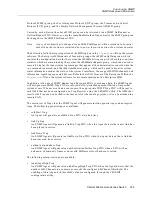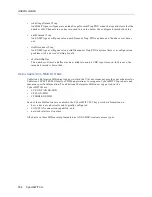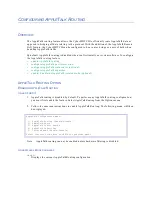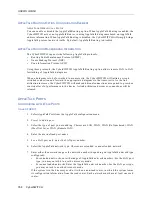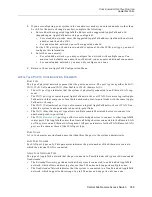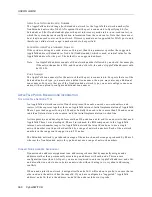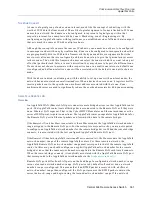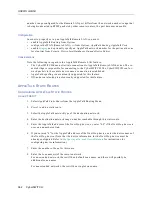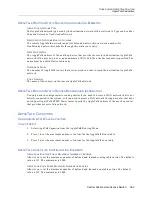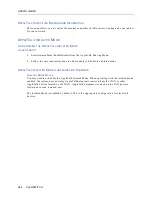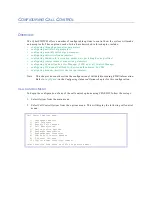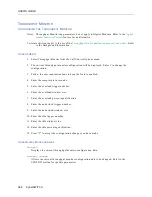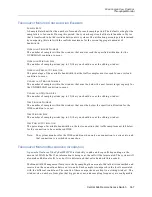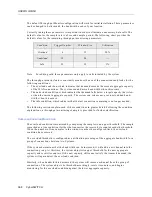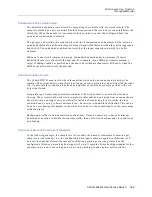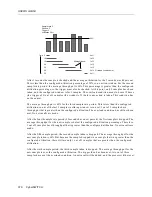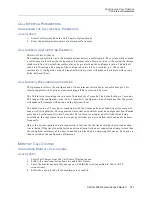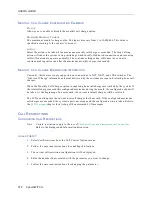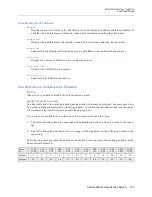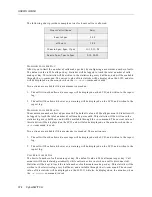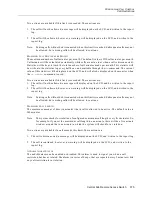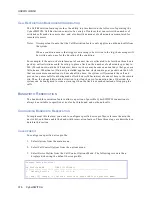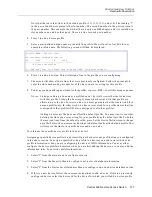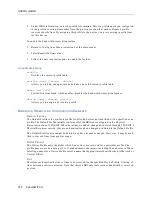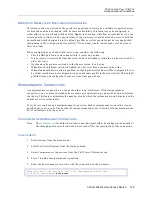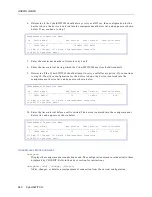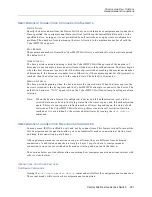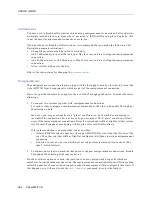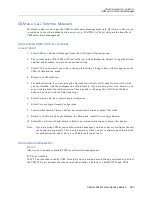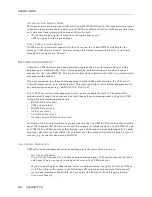
Central Site Remote Access Switch 369
C
ONFIGURING
C
ALL
C
ONTROL
Throughput Monitor
U
NDERLOAD
C
ONDITION
M
ONITORING
The underload condition is monitored by comparing the samples with a lower threshold. The
sample is marked as a true condition if both the transmit and the receive byte count fall below the
threshold. When the number of true samples in the window reaches the configured limit, the
underload condition has occurred.
The purpose of detecting this condition is to decide if connections can be released. Therefore, an
underload threshold is defined in terms of a target bandwidth that is less than the current aggregate
bandwidth. The underload condition indicates that the target capacity can satisfy the traffic
demand.
When only one circuit remains in a group, the underload mechanism determines if a lower
bandwidth circuit would satisfy the demand. For example, if one 384Kbps circuit remained, a
target of 64Kbps could be specified and the above described mechanisms will identify when the
64Kbps circuit would satisfy the demand.
I
DLE
C
ONDITION
M
ONITORING
The CyberSWITCH monitors for the idle condition when only one connection to another site
remains. The system detects when there is no longer a need to maintain connectivity with the other
site. An absolute idle condition is defined as a number of consecutive sample periods with zero
bytes transferred.
Keep-alive type frames may sometimes continue to flow when there is no actual device data
flowing. The system would not detect a completely idle condition, and might leave a connection in
use when it may no longer carry useful traffic. Instead of monitoring for zero traffic, the idle
condition can be set up to detect extremely low, but non-zero, bandwidth utilization. This can be
done by not requiring all samples in the window to be zero, or by monitoring for a low percentage
utilization level.
Background traffic is often transmitted continuously. It may be necessary to have a minimum
dedicated connection to handle the constant traffic, then use switched connections for peak loads
and backup.
T
HROUGHPUT
M
ONITOR
C
ONFIGURATION
E
XAMPLE
In the following example, the sample rate is 5 seconds, the number of samples to examine per
sample rate (the window) is 3, the configured percentage to compare against (utilization) is 50
percent, the number of times the sample’s utilization percentage must be greater than the
configured utilization percentage (the trigger) is 2 out of 3 samples. To make things simpler for this
example, there is only one call up and we are only checking to add another call (overload).

